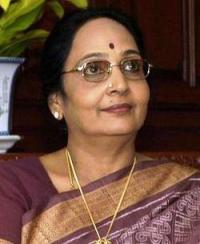Mohammed Dawood Khatri Biography 
Mohammed Dawood Khatri is a craftsman from Bagh of Madhya Pradesh best known for his contributions towards Bagh printing. He is the son of Ismail Sulemanji Khatri, a renowned painter and internationally acclaimed artist and craftsman from Madhya Pradesh who re-invented and re-established Bagh print, a part of the centuries-old hand block printing practice. Ismail Sulemanji Khatri revolutionised the art of Bagh printing taking inspirations from Taj Mahal and common jali patterns, used on bed sheets, saris and fabrics and also improvised and discovered new colour shades of dyes used for this purpose.
He was born on 1 January 1974 in Bagh, Madhya Pradesh as the son of legendary craftsman Ismail Sulemanji Khatri. Among his 4 siblings, Abdul Kadar Khatri, Mohammed Yusuf Khatri and Mohammed Rafik Khatri are leading names in this field. His nephew Mohammed Bilal Khatri is the successful Bagh printing artist from his family belonging to this generation. Dawood’s father revolutionized Bagh printing in textile printing and also employed numerous people in this industry. Now more than 12,000 people are employed in Dhar district alone. His brothers are also associated with the same field.
Earlier the family prefabricate different traditional dresses for different groups of people based on caste, religion, tradition etc and they used to be identified by the type of dress design chosen. Bagh block prints were originally worn only by Adivasis and rural people. In the 1990s, Khatri family started experimenting with foreign clothing as well for international market. Some of their experiments include incorporating modernity in the wooden blocks and colours, block printing with hand and designing cultural clothing firstly, printing on bamboo mat, leather, jute etc.
Like his siblings, Dawood is a recipient of several state level and national awards. In 2011 he received State Awards from the government of Madhya Pradesh. He also received National Award 2012 and National Merit Award 2007, both given by ministry of textiles, government of India.
Published: January 22, 2019
Updated: January 22, 2019






















